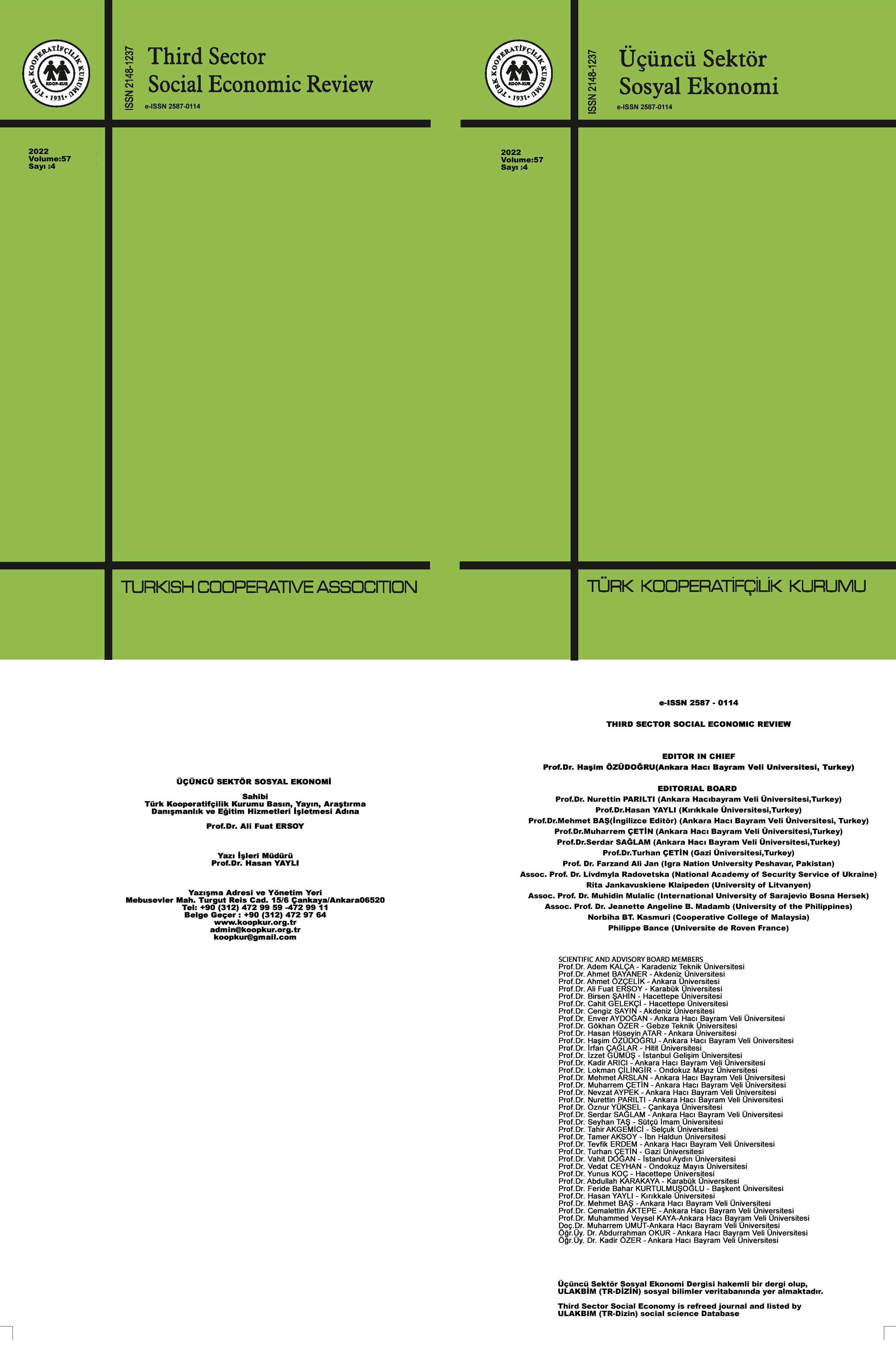A MICROECONOMIC ANALYSIS OF MİGRATİON PHENOMENON IN TURKİSH LABOR MARKETS
DOI:
https://doi.org/10.15659/3.sektor-sosyal-ekonomi.22.12.2026Keywords:
Labor Market, Migration, Multinomial Logistic Regression, Household Labor Force Survey, EmploymentAbstract
Turkey has recently received and continues to receive an increasing amount of immigrant, primarily from the Middle East countries. In this context, addressing the integration of immigrants into the Turkish labor market will guide policy makers. The aim of this study is to analyze the characteristics of the migration phenomenon in the Turkish labor market. For this purpose, the ""Labor Force Statistics Micro Data Set"" for 2020, which was conducted by the Turkish Statistical Institute and represents the whole country, was used. In the model, in which the individual's labor force status (unemployed, employed and not participated in the labor force) is used as the dependent variable, geographical regions, gender, age, the latest educational attainment and marital status are considered as the main control variables. According to the findings of the study, in which the multinomial logistic regression model was used, individuals residing in another country before Turkey were more likely to be employed and not in the labor force than to be unemployed. It is observed that female immigrants are more likely to be unemployed or non-participated to the labor force as compared to male immigrants. Furthermore, immigrants who have lower levels of education are more likely to be employed than individuals with higher education levels. Finally, when the regional results are analyzed, it is noteworthy that those living in the Marmara region are less likely to be unemployed or not in the labor force, while those living in the Mediterranean and Southeastern Anatolia regions are particularly likely to be unemployed or not in the labor force.







